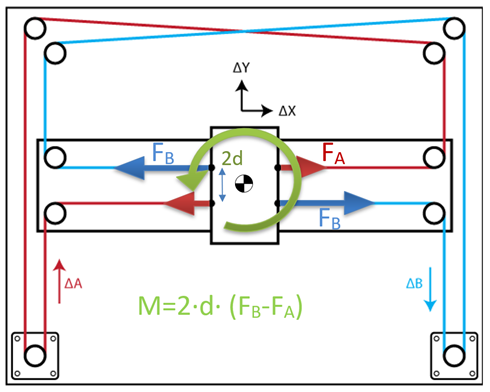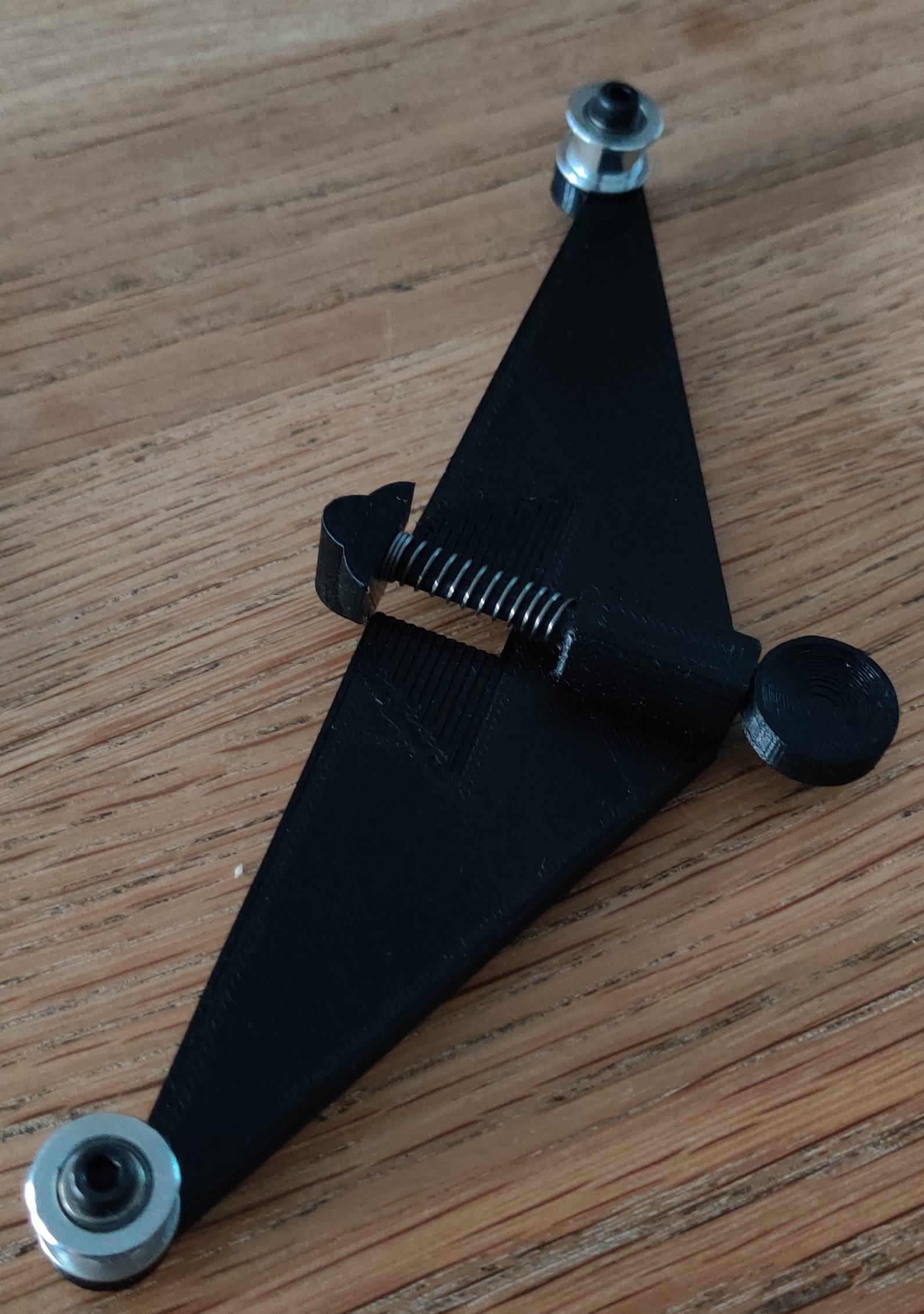If you are referring to the tension in a single belt, but ar different positions, the tension is everywhere the same. It is one belt, the force/tension is the same in the belt. If the length of the belt is shorter because of a carriage to idler, the plucked sound may differ but the tension is the same.
If you are referring to different belts, e.g. the top versus the bottom belt, for CoreXY machines, the tension in the two separate belts should be equal to allow equal force pulling the carriage. If uneven, this may lead to incorrect/skew prints or binding of linear bearings (from experience). A typical layout of the mechanism is shown below. Note that there are several solutions for placing the belts; they can be in the same plane (where the belts cross in the back, as depicted below) or have the belt each in their own plane (as in the HyperCube Evolution design as depicted in the image of the question).

Drawing published by Ilan E. Moyer, taken from http://corexy.com.
For both options, incorrect belt tension causes for different forces onto the the printhead carriage and result in a torque on the carriage (either in X-Y or in X-Z). E.g. a tight blue belt with a less tight red belt cause a resulting counter-clockwise torque on the carriage in the image below:

I use a tool (gauge) to determine the tension to compare both belts and make sure the tension in both is the same:

Many CoreXY designs can adjust the tension of the belts at the carriage by screws. Some designs feature the stepper in the back and an adjustable pulley in the front.



